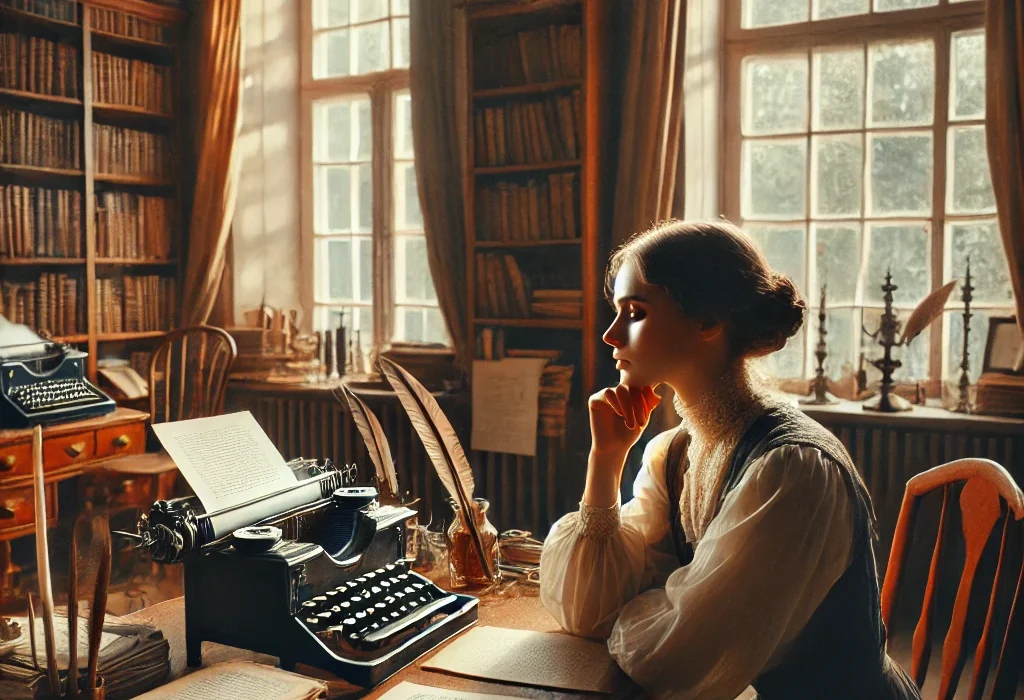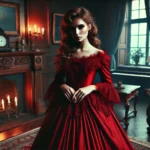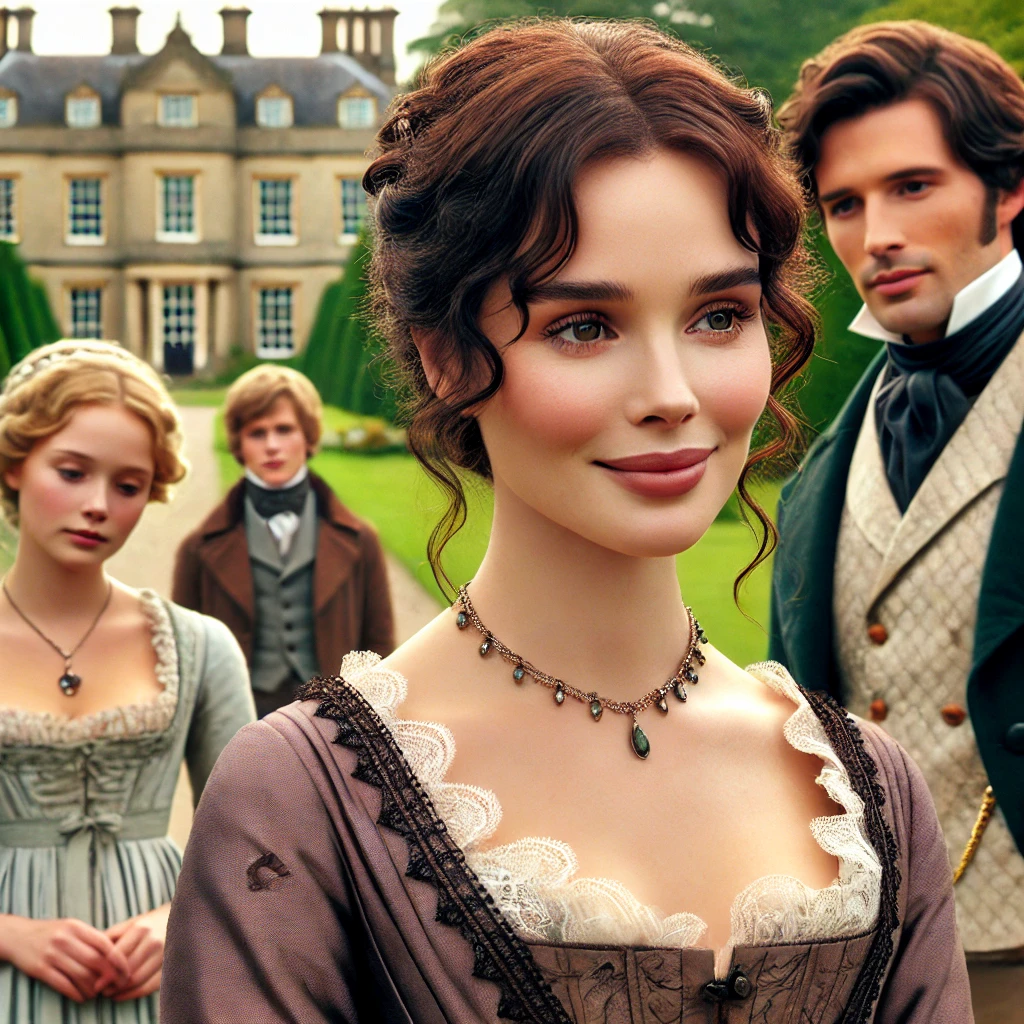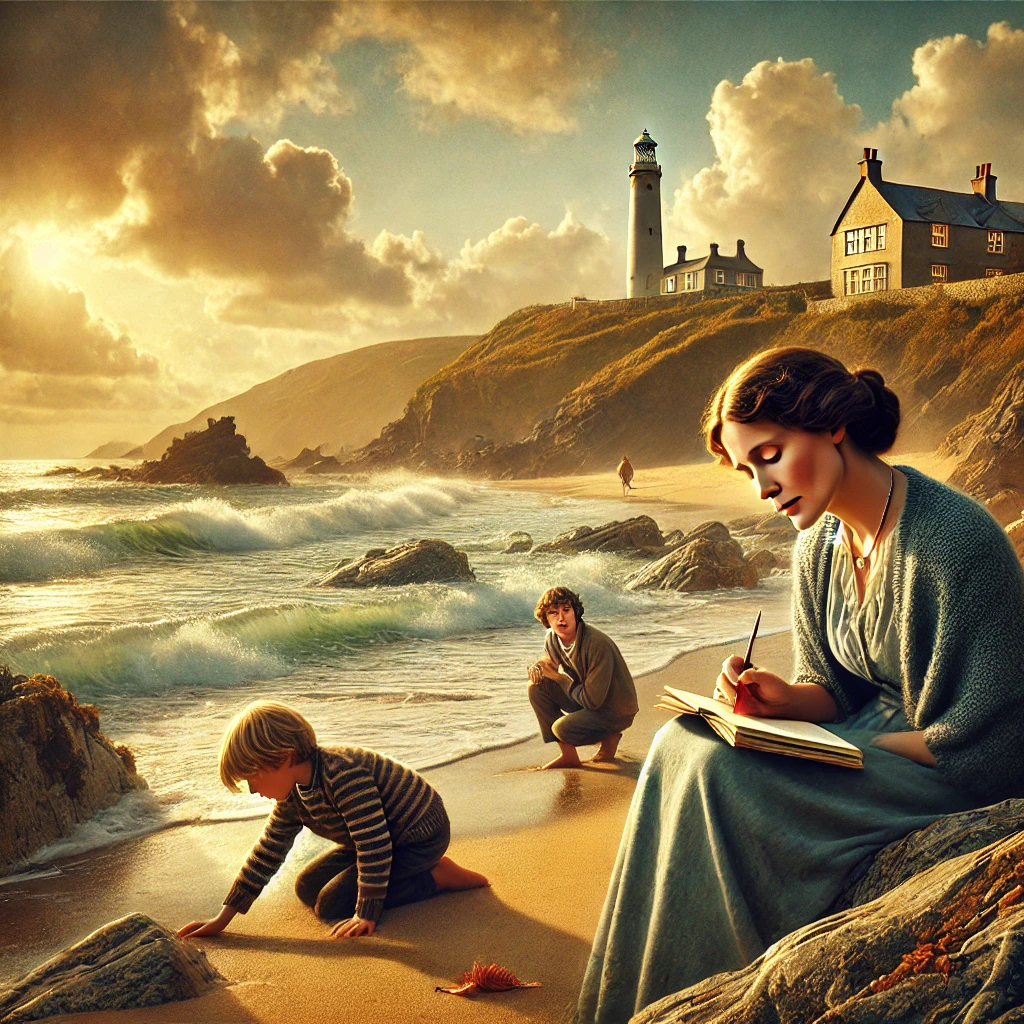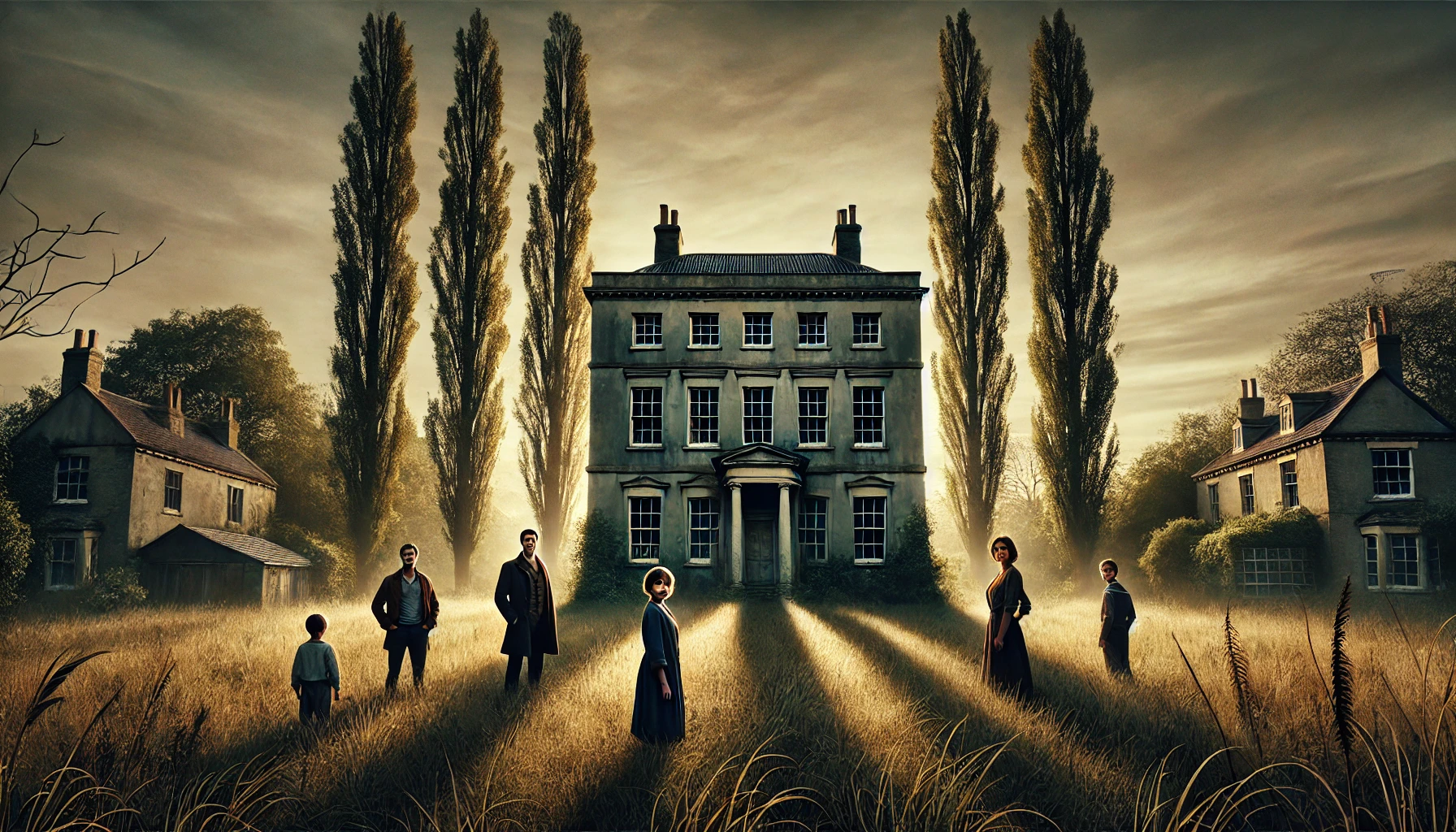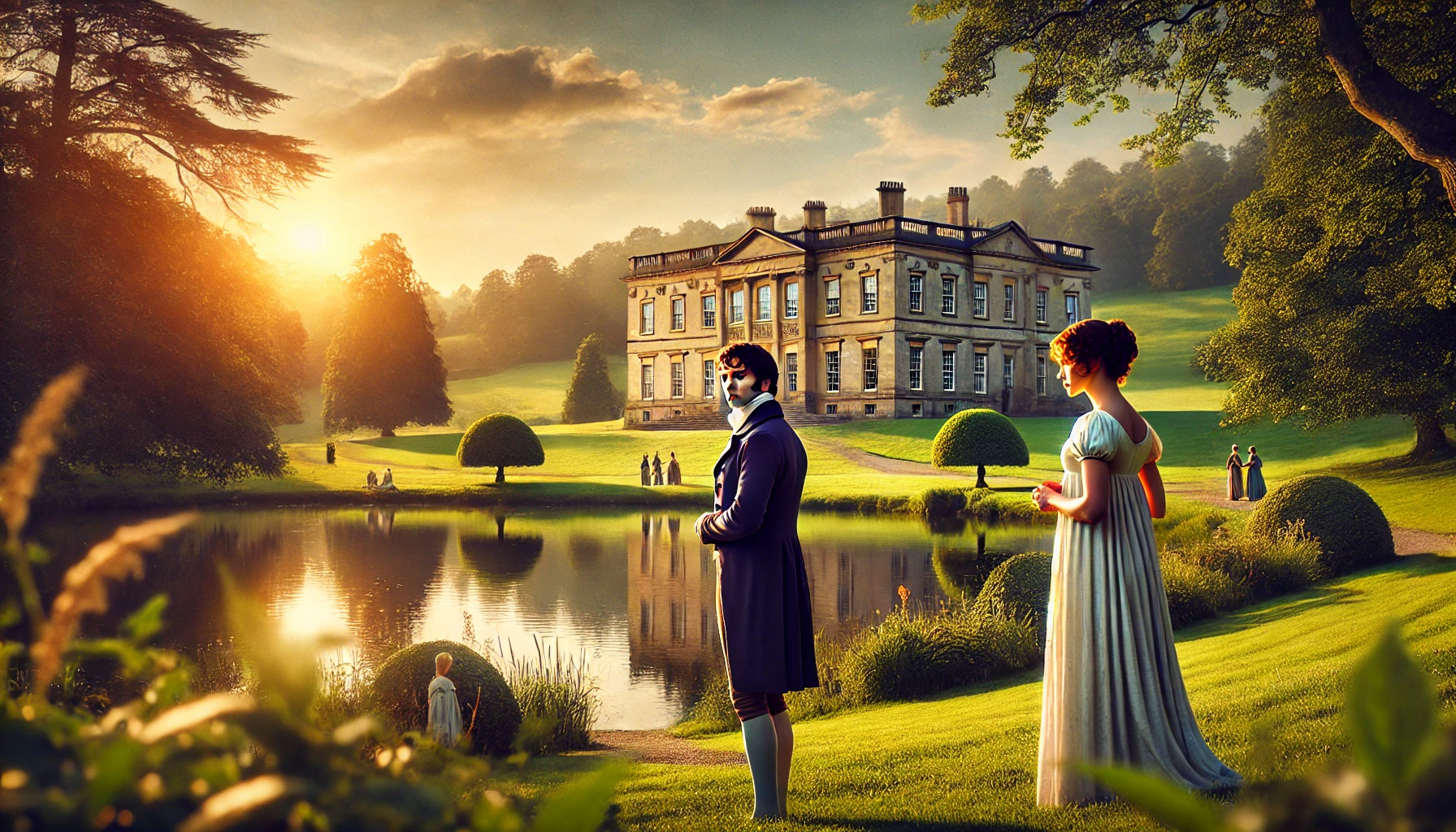“A Room of One’s Own,” published in 1929, is a renowned essay by Virginia Woolf. The work is a seminal text in feminist literary criticism and examines the intersections of women, fiction, and socio-economic independence. Woolf’s famous assertion, “a woman must have money and a room of her own if she is to write fiction,” underpins the essay, which is based on two lectures she gave at Cambridge University in 1928. Through fictionalized narratives, Woolf explores the historical exclusion of women from the literary canon and the broader implications of gender inequality on artistic creation.
Plot Summary
On a crisp October day, the narrator, who might be called Mary Beton or Mary Seton—or perhaps by another name entirely—sits by a river at the fictional university of Oxbridge. In this peaceful moment, the narrator contemplates an invitation she received to speak on the subject of “women and fiction.” What does it mean, she wonders. Does it refer to the fiction women write? The fiction written about them? Or perhaps the nature of women themselves? Her thoughts roam freely, swaying like the reflections in the water, though soon she pulls them back, resolving to offer an opinion, if not a conclusion: “A woman must have money and a room of her own if she is to write fiction.”
To support this claim, the narrator recounts a series of events from her visit to Oxbridge. As she walks across a grass plot, she is suddenly intercepted by a Beadle, a solemn figure who informs her that women are not allowed to walk on the sacred turf reserved for men. She steps aside onto the gravel path, pondering the invisible rules that govern this world, rules that keep women away from the spaces of learning and creation. She continues to reflect on the institutional structures that have historically excluded women from education, contrasting her meandering thoughts with the smooth traditions of Oxbridge’s male-dominated intellectual life.
Lunch at the men’s college is a lavish affair: soles in a creamy sauce, partridges with all the trimmings, and puddings that rise like sugar sculptures. The meal is accompanied by fine wines that warm the spirit and spark conversation. It is an embodiment of intellectual nourishment, as if the pleasures of the table are directly linked to the ease with which ideas flow. Later, the narrator visits the women’s college, where the stark difference is evident. Dinner there consists of a simple meal—plain gravy soup, beef with greens, and prunes for dessert. There are no luxurious indulgences here, only the bare necessities. The narrator is struck by how these two meals symbolize the disparity between men’s and women’s access to resources. The wealth that funds the men’s colleges has, over centuries, bought more than just buildings and books; it has bought the freedom to create, to think, and to write.
As she leaves the women’s college, the narrator’s thoughts turn to history. Why, she wonders, have there been so few women writers, and why have they been given so little space to express themselves? To illustrate this, she imagines the life of Judith Shakespeare, the fictional sister of the great playwright William Shakespeare. In this imagined history, Judith possesses the same extraordinary genius as her brother, but she faces an entirely different fate. While William is free to pursue his art, Judith is trapped by the constraints of her gender. Denied education and opportunities, she eventually runs away to London, only to meet scorn and rejection. Her gifts unrecognized and her spirit broken, Judith ends her life in despair. The narrator mourns the loss of countless women like Judith, whose talents were crushed by a society that did not permit them the same freedoms granted to men.
These reflections lead the narrator to the British Museum, where she attempts to find answers about women’s place in literature and society. However, the library’s vast collection of books written by men about women overwhelms her. She feels the weight of centuries of male judgment and authority pressing down on her, leaving little room for women’s voices to emerge. The narrator becomes acutely aware of the anger that simmers beneath the surface of these scholarly texts, as men throughout history have used their positions of power to define women in ways that reinforce their own superiority. She observes that women have served as mirrors, reflecting men back to themselves at twice their natural size, providing the validation men need to maintain their dominance in the world.
From this sea of male-written books, the narrator draws one simple conclusion: women have been oppressed by poverty and the lack of intellectual freedom. Without money or a space of their own, women have been denied the conditions necessary to create great art. Woolf points to the few exceptions—Jane Austen, the Brontë sisters, and George Eliot—remarking that they managed to write despite these enormous obstacles, but they are rare outliers in a long history of silence.
Returning to the idea of a room of one’s own, the narrator concludes that financial independence is crucial for women’s intellectual and artistic freedom. She recounts her own experience of inheriting five hundred pounds a year from an aunt. This legacy has freed her from the drudgery of odd jobs and scraping by, allowing her to think, to write, and to be indifferent to the opinions of men. Money, she reflects, is the key to unlocking women’s potential, granting them the space to think for themselves without being beholden to anyone.
As she prepares to leave the British Museum, the narrator acknowledges the deep-seated anger she has uncovered—not just her own, but the anger of countless women who have been locked out of the world of art and ideas. Yet, she insists that anger is not enough. If women are to take their rightful place in the world of fiction, they must not merely rage against the injustices of the past. Instead, they must claim the material conditions—money and space—that will allow them to write their own stories, on their own terms.
In her final reflection, the narrator envisions a future where women will no longer be limited by the constraints of poverty and oppression. In this future, women writers will be free to explore the depths of their creativity, unburdened by the need for approval or validation from men. They will write not as daughters, wives, or mothers, but as individuals, fully realizing their own potential. The essay ends with a call to action: for women to seize the material conditions that will enable them to create, and for society to recognize the value of women’s voices in shaping the literary landscape.
Main Characters
Woolf primarily uses fictionalized personas, who serve as stand-ins for women writers across history.
The Narrator (Mary Beton, Mary Seton, or Mary Carmichael): Woolf’s narrator is a composite figure, a representative “everywoman” pondering the relationship between women and writing. Her reflections on gender, creativity, and societal structures drive the essay forward as she navigates universities, libraries, and social structures that have historically denied women opportunities.
Judith Shakespeare: A fictional sister of William Shakespeare, Judith serves as a symbol of the lost potential of women writers. Woolf imagines that if Shakespeare had an equally talented sister, her opportunities would have been limited by gender, leading to her tragic demise. Judith embodies the systemic suppression of women’s creative genius throughout history.
Theme
Economic Independence and Creativity: Woolf famously argues that financial freedom and personal space are essential for women to produce great literature. Without “a room of her own,” women lack the physical and emotional space needed to think freely and write.
Patriarchal Structures in Literature: The essay critiques how male-dominated literary traditions have marginalized women, both as creators and subjects. Woolf reflects on how women have been portrayed in literature, often written by men, and how they have been denied access to the education and financial support necessary to write.
The Role of Fiction and History: Woolf asserts that fiction can reveal more truth than historical fact. The stories of real women are often untold or forgotten, but through fictional characters like Judith Shakespeare, she illustrates the deep injustices faced by women in history.
Androgyny of the Mind: Woolf introduces the idea that the best minds are androgynous, meaning they transcend gendered ways of thinking. She suggests that the future of literature depends on this androgynous perspective, where men and women writers are free from societal expectations tied to gender.
Writing Style and Tone
Woolf’s writing in “A Room of One’s Own” is contemplative, lyrical, and layered with irony. She frequently blends personal narrative with fictional scenarios, weaving together real historical contexts and imagined possibilities. Her prose is rich in metaphors, such as the river of thought she describes while sitting on the banks of Oxbridge, where ideas flow freely but are often obstructed by societal limitations. Her reflective and narrative tone engages the reader as both an intellectual inquiry and a personal conversation, while her rhetorical questions invite readers to challenge existing norms about gender, literature, and power.
Woolf also adopts a conversational tone that makes her arguments feel accessible and persuasive, despite the complexity of the ideas she presents. She combines humor with sharp social critique, often masking deeper insights within seemingly lighthearted observations. Her deliberate use of fictional elements allows her to explore theoretical issues with imaginative freedom, illustrating her belief that fiction can carry more truth than mere facts.
We hope this summary has sparked your interest and would appreciate you following Celsius 233 on social media:
There’s a treasure trove of other fascinating book summaries waiting for you. Check out our collection of stories that inspire, thrill, and provoke thought, just like this one by checking out the Book Shelf or the Library
Remember, while our summaries capture the essence, they can never replace the full experience of reading the book. If this summary intrigued you, consider diving into the complete story – buy the book and immerse yourself in the author’s original work.
If you want to request a book summary, click here.
When Saurabh is not working/watching football/reading books/traveling, you can reach him via Twitter/X, LinkedIn, or Threads
Restart reading!


